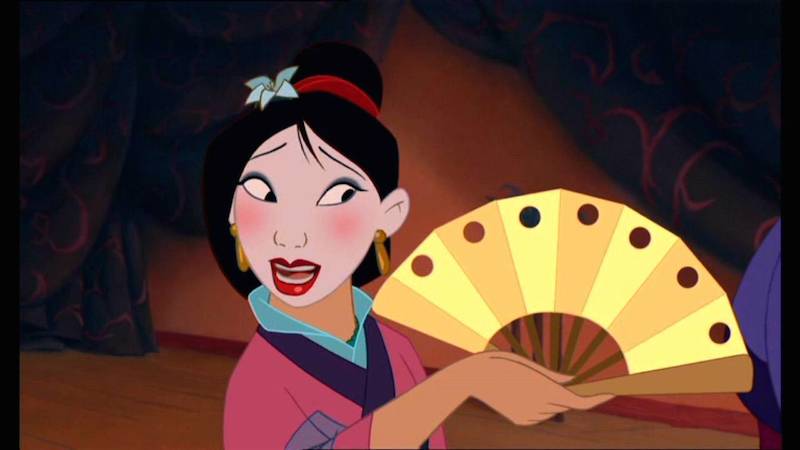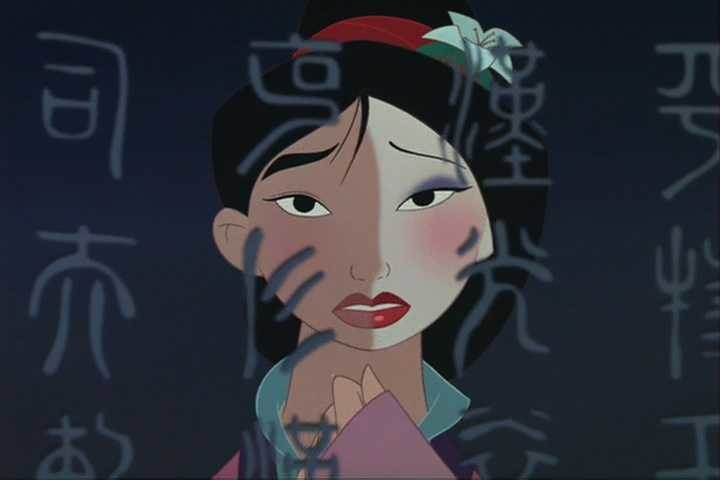Disney’s “Mulan” came out right around the time my generation started watching movies in earnest. Long after Disney’s Golden Age (1937-1942), Millennials’ grew up during the animation giant’s important soul searching phase: the Disney Renaissance (1989-1999). We saw non-traditional families, people of color in lead roles and a general break from the norms of Disney princess storytelling. This new art was an essential part of growth for a generation that is more fluid (and more free to be fluid) about labels and identity than those that came before us.
Millennials are especially familiar with the tail end of that wave—when smaller films popped up in the wake of giants like “The Lion King” and “Beauty and the Beast.” It was around the time the studio began to pivot toward 3D computer generated animation (a trend that gained steam throughout the 2000s) that a few truly unique films made it to production. Among those were “Lilo and Stitch,” a radical film for its time and, along with this year’s “Moana,” one of the only mainstream examples of a non-white, non-princess to come out of the Mouse House. The other film that fits this mold is, of course, “Mulan.”
“Mulan” sticks out even more than “Lilo and Stitch” for managing to cast a largely Asian—if not always Chinese—stable of actors. (“Lilo and Stitch” did feature Tia Carrere as Nani and use some Hawaiian authentic music, but largely relied on a white cast and crew.) And yet as unique as “Mulan” was for pulling such a diverse and interesting cast (in 1998, no less), it is even more remarkable for its treatment of gender and sexuality. To explore “Mulan’s” subversive tendencies, we must first understand what archetypes the film challenges.
THE BADASS PARADIGM
In many (if not most) action films throughout the 20th century, female characters functioned as damsels. They existed for male characters to fight over or rescue. To combat this trend, filmmakers started to turn damsels into badasses.
These kung fu mastering/gun toting/butt kicking women (think Trinity from “The Matrix“) were physically imposing and more aggressive than their predecessors. But issues arise when this approach is relied on exclusively to produce “strong female characters.” It reduces female strength to how well it can imitate male physicality. This can manifest in a few unfortunate ways, leading to a phenomenon I like to call “badass fatigue”: filmmakers relying on badass attributes to excuse thinly written female characters. In the process, their female leads lose nearly (if not all) agency and complexity.
Forcing female leads to function as physically imposing forces implies that traditionally male characteristics are necessary for women to achieve agency in the badass paradigm. For the paradigm to work, these women must be physically strong and, if possible, they must defeat men in combat to prove how strong they are.
The product of this is a “strong female character” in the most literal sense—but not where it matters. Simply being a physically domineering badass doesn’t mean you won’t be swept aside when the plot demands it (see Tasha Robinson’s excellent article on “Trinity Syndrome” for more). Further, this rigidity trains millions of young women, feminine men and other genders to feel like they’re not strong enough, or indeed worthy of their humanity, because they don’t naturally exhibit traditionally masculine tendencies.

STRENGTH IN FEMININITY
At first blush, “Mulan” looks exactly like the kind of movie that traffics in the regressive ideology of the badass paradigm. The elevator pitch for the film is, “Young woman fills in for her ailing father to fight in the Emperor’s army by pretending to be a man, outshines her male counterparts and then saves China.” The movie goes to lengths to have us believe Mulan (Ming-Na Wen) is an archetypal badass.
To do this, “Mulan” begins by establishing a gendered social hierarchy for its title character to rebel against. Indeed, in the first song of “Mulan,” “Honor to Us All,” other women bathe, clothe and prepare her like a doll to meet the matchmaker. She is told that her manners and appearance will win her a husband, and in doing so, she will bring honor to her family. The consequence of not conforming is literally “uproot[ing] her family tree.” As she theatrically fans herself in a struggle to impress the matchmaker, the weight of her ancestors hangs on her shoulders.
This moment leads to the song “Reflections,” wherein she considers the duality of her identity. She has been asked by her family and her community to fulfill a role of abject conservative femininity. Yet Mulan knows that not only will she never be the person her family expects, but that she won’t even “pass for a perfect bride, or a perfect daughter.” Note the use of “pass” here, a loaded sociological term that has meaning across everything from race and religion to gender and sexual identity.
“Mulan” continues to lure us into the comforts of a well-worn badass trope when she rebels against these expectations and leaves to join Li Shang’s (B.D. Wong) regiment in the army in her father’s stead. Note here that Mulan’s agency is still merely in filling her father’s shoes; her identity is locked into proving she can do a man’s duty.
In the camp, she is instantly confronted with signs of traditional masculinity: boastful gruffness (a minor accident leading to an all-camp brawl) and repellant social habits (picking toes, spitting). This world which Mulan sought for herself couldn’t be more antithetical to the vision of traditional femininity we experienced with the matchmaker. Again, the film paints a black and white gender divide which erodes over the course of the narrative.
The most popular song off the soundtrack, blatantly titled “I’ll Make a Man Out of You,” immediately has double meaning. Li Shang challenges his recruits’ idea that gruffness and poor social habits are the measure of manhood. Instead, he has his soldiers fulfill their masculine promise by becoming refined fighting machines. In parallel, of course, Mulan becomes a “man” by this new definition. This transition is, not coincidentally, communicated through a brilliantly animated and edited training montage reminiscent of the ultra masculine “Rocky” and so many other copycats that it inspired.
The film goes further to suggest that it’s succumbing to the badass paradigm throughout the montage. Mulan—now going by the pseudonym Ping—outdoes her peers on every task. She even manages to figure out how to get the arrow from the wooden pole in the center of camp, a task none of the bigger, stronger recruits manage to do. Gone are the feminine-centric songs that began the film like “Honor to Us All.” She has become, as far as the audience is concerned, “a man.”
But has she? Successful training is indeed how she captures Shang’s attention, but it isn’t how she ultimately defeats the Huns. When the army finally does face down with Shan-Yu (Miguel Ferrer) and his band of raiders at the mountain pass, Shang and his warriors find themselves woefully outmatched. It’s Mulan’s ingenuity—using a rocket to target the snowbank and cause an avalanche—that eventually buries their enemies.
This is significant. Here a lead female character doesn’t use strength to prove herself, but rather wit. This is even more jarring after we spend a good deal of time watching Mulan not only meet her fellow soldier’s feats of strength, but outdo them. By neglecting her successful training in the camp, this moment undercuts the value of physical strength (and indeed masculine traits) entirely.
CHALLENGING THE BADASS PARADIGM
Directors Tony Bancroft and Barry Cook don’t stop there. Mushu and Cri-Kee see the unvanquished villains emerge from the snow and head for the Forbidden City, promising yet another showdown as they try to assassinate the emperor. And once again, Mulan is the only one left to save the day.
The film takes an even bolder stance on gender in the finale. Mulan uses her smarts (again) to concoct a plan to defeat Shan-Yu as she did on the mountain. This time, however, she wields the femininity she allegedly rejected at the film’s onset in conjunction with what she learned from Shang.
Consider how she takes back the palace after Shan-Yu’s men break in and take the emperor hostage. Mulan asks her friends from the army, Yao (Harvey Fierstein), Ling (Gedde Watanabe) and Chien-Po (Jerry Tondo), to dress up in distinctly feminine clothes and makeup. The whole sequence harkens to the ultra-feminine satirical number “Honor to Us All,” where the film makes it clear that Mulan rejects strict gender roles. Yet here, she calls on this experience to ask her team to engage with Shan-Yu’s men as women by adopting traditionally female traits.
And it works. First, Mulan and her pals manage to scale the side of the palace using the sashes from their outfits—again, explicitly using feminine accoutrements to achieve their goal. Upon entering the building, they then dupe the guards into thinking they’re women (and therefore non-threatening) and knock them out.
“Mulan” breaks from the badass paradigm in two ways as its title character takes initiative in the climax. Most obviously, Mulan and her allies prey on the presumption by Shan-Yu’s men that women pose no immediate danger to their well-being. Despite the fact that they’ve suddenly appeared in a locked-down palace, Shan-Yu’s soldiers think nothing of their presence and shrug them off as “concubines.” But deeper than that, Mulan also builds on lessons she learned not only from Shang’s training, but from the matchmaker and her own family, as well.
Of course the film doesn’t go so far as to say that the restrictive, rather oppressive nature of female roles in the opening scene are the ideal. But it does suggest that the femininity baby need not be thrown out with the patriarchal bathwater. This is a point often lost on directors and writers who trade in badass fatigue. There is strength in femininity, and feminine people do not need to forego their personality and behavior to gain agency.
The scene takes the message further when Yao, Ling and Chien-Po all willingly engage with this plan despite their obviously masculine demeanor. Their lack of protest is a statement from the filmmakers; once again, they challenge the notion that femininity and male identity are mutually exclusive, and that femininity represents weakness. At no point during this plan are any of the gang seen as fragile, clumsy or meek. They brazenly push ahead with their task (following a woman’s lead, no less) and deal with Shan-Yu in the process.
It is worth noting here that “Mulan” suggests a combination of classical femininity—the crew’s outfits and demeanor—and masculinity—physically taking down the guards—is the true foil to the huns. We see at the mountain pass that simply training to become “a man” isn’t sufficient. “Mulan” nudges that merging these identities in strength is the key to success, branded here as “saving China.”
On the rooftop, Mulan finally defeats Shan-Yu using yet another combination of femininity and ingenuity. First, she disarms him using her fan. This is significant; this is the very same object she used in her meeting with the matchmaker—a heretofore intrinsically feminine symbol in the film’s visual language. Yet on the roof, Mulan uses it to trick the physically imposing Shan-Yu into losing his sword. From there, she uses a foot swipe she learned in her hand-to-hand training with Shang to trip Shan-Yu, setting him up for a firework finish from Mushu (Eddie Murphy). She finally bests her archetypal male foe with a clever fusion of the masculine and the feminine, demonizing neither in the process.

“MULAN,” ROMANCE AND SEXUALITY
The other related trope “Mulan” manages to undercut is how it handles romance and attraction. Once again, the film appears on the surface to succumb to the same pitfalls of so many other Disney films: woman meets man, woman has a troubled life or a secret, man saves or validates her, a conflict arises and is resolved and then they get married. It is the classical Hollywood narrative, as based on traditional sexuality and gender roles.
Some films in Disney’s recent past eschew this trend. Although it features romance between two of its main characters, “Frozen” (2013) puts its focus on the relationship between sisters Anna and Elsa. In the recently released “Moana,” the titular lead never treads on romantic ground at all. “Mulan” doesn’t play out this way. Bankcroft and Cook take a riskier approach: break down the traditional Disney romantic path down piece by piece instead of sidestepping it.
LI SHANG’S ATTRACTION
When Mulan and Li Shang meet, Mulan has assumed the identity of Ping. For all intents and purposes, Shang has no idea that Mulan is in disguise. To him, Ping is just a scrawny, clumsy male soldier. This is the first moment the film makes a clear delineation between “Mulan” and films in Disney’s princess pantheon. Instead of a woman meeting man, we have a man meeting a man.
This context is what makes Li Shang’s attraction to Ping all the more interesting. Once again, we turn to the famous montage sequence where Shang begins to take notice of Ping’s quick learning, physical acumen and inventive methods of meeting his challenges. As they train, Shang expresses pleasure at Ping’s progress through body language.
Disney, of course, never goes so far as to allow us to see Shang making any overt romantic gestures toward Ping. Yet, perhaps to foreshadow an eventual romance, we do get a few stolen glances from Shang. As Ping continues to try and blend in with her peers and prove herself to the captain, Shang becomes increasingly affectionate. What starts as head shaking and disregard becomes a genuine smile when Ping defeats him in hand-to-hand combat.
This repeats when Ping (Mulan) tosses down the arrow from the wooden pole. She sits at the top with a smirk, perhaps unaware of Shang’s genuine admiration and affection from below. At this point, Mulan has proven herself in every way except the traditionally feminine. Despite this, Shang shows genuine interest—something he withholds from the other soldiers under his command.
We see more of this attachment a few scenes later. The scene opens with a rousing (and arguably ironic) rendition of “A Girl Worth Fighting For” as each soldier pitches in their vision of the perfect woman. These often come down to the superficial traits discussed in “Honor to Us All”: appearance, the ability to cook. Yet Shang doesn’t contribute to the song after heading up the previous number in the camp. Even Chi-Fu (James Hong) and Ping/Mulan get a verse in, the latter pining for “a girl who’s got a brain, who always speaks her mind.” Shang’s lack of participation is perhaps another hint at his disinterest in traditional ideas of sexuality and gender norms.
Just as the song ends, the film’s most devastating moment lands as the company reaches the Tung Shao pass. There they find a smoldering village and Shang’s father’s defeated army: decimated, burnt to the ground by the Huns. All that’s left is a little girl’s doll.
Shang is understandably devastated by the revelation. He solemnly builds a shrine in his father’s honor. Behind him, Ping waits in solidarity. At this point, we are led to believe that Ping, of all the soldiers, has enough familiarity with Shang to be there for him in his grief. Shang even rests his hands on Ping’s shoulder, wordlessly expressing his thanks for sharing the pain.
We see this gesture again when Ping saves Shang’s life moments later. Shang says he trusts Ping now more than ever before, again laying a hand on her shoulder. Shang becomes even more intimate when he learns that Ping is wounded; he calls for help and then offers words of encouragement as Ping fades out of consciousness. When the scene refocuses, Shang paces anxiously outside Ping’s tent as he worries after her health.
“MULAN” AND THE SEXUALITY BINARY
Mulan awakens to learn that the façade has been lifted. The whole camp now knows that she’s a woman. Yet it isn’t for being a woman that Shang rejects her service. In the moments just prior to her passing out, we learned that Shang trusts her. It is the violation of this trust (and perhaps Shang’s own confused feelings) that leads to his anger and her rejection. Of course, his affection is also likely the deeper reason for him sparing her life (and leaving her a sword) against official law.
What does this mean about Shang’s sexuality? We can only speculate, but it certainly paints a picture of someone who found himself attracted to someone who presented as a man for part of the film. While Ping does eventually turn out to be a woman, Shang appears to be attracted to the person regardless of gender.
Too often in film, sexuality is limited to a strict binary. A film is either a “gay romance film” or a “romance film” (because straight is the default norm in films about love—a discussion for another time). Characters are almost never allowed to be bisexual or pansexual, certainly not in the leading role.
And yet here we see Shang demonstrate affection for someone whose gender is fluid throughout the movie (at least outwardly). This is a unique feat rarely repeated. And as we soon see, his love for Ping/Mulan never really dies.
In the final scene of the film, Mulan has fully unveiled her identity and Shang still wants to marry her. He knows her masculine and feminine qualities. For him, gender isn’t locked into a rigid category per the matchmaker’s (and tradition’s) decree. He loves Mulan—or Ping—for who she is. He realizes that as much as Mulan lied about her name, she didn’t lie about who she was: an industrious fighter and a quick thinker. She is, as discussed, a fascinating marriage of masculine and feminine identity.
SHANG’S AMBIGUOUS SEXUALITY IMPROVES THE NARRATIVE
There is some level of ambiguity about Shang’s sexuality. It may be that the stolen glances and camaraderie between himself and Ping are nothing more than platonic friendship building between two men. I would counter this point in two ways.
First, aside from the fact that Shang doesn’t show anyone else this level of attention in the camp, it is possible that Shang could never and would never have moved on his feelings for Ping due to the nature of their relationship as commander and soldier. That doesn’t mean the feelings weren’t there, but it does preclude open expression beyond subtle looks and gestures and explains why this connection isn’t made more explicit.
Second, the story works better if Shang has feelings for Ping and Mulan. The only way to make the final moments of the film meaningful is to have Shang build his romantic interest in Ping/Mulan from the start. If all Shang has seen of Mulan is her saving the emperor, then he’s known her as a woman for approximately a few hours. In any good romance story, that wouldn’t precipitate a marriage proposal. Conversely, if Shang built his affection from the moment he met Ping to the conclusion of the narrative, then the romance has a full, almost classical narrative arc. Indeed, Mulan and Shang’s relationship does in many ways follow the traditional Disney framework, but radically redefined with a more fluid spectrum of gender and sexuality.
“MULAN”‘S WRESTLING WITH IDENTITY IS KEY TO ITS SUCCESS
On the surface, “Mulan” appears to adhere perfectly to the badass paradigm: a woman becomes a “strong” lead by virtue of her physical competency. However, closer examination of the film reveals that the story emphasizes strength in femininity and ingenuity, not physical power. Primary male characters also adopt feminine traits in order to defeat the the film’s villains. Mulan therefore becomes the consummate strong female character not (only) because she is literally strong, but because she demonstrates agency in every phase of the narrative. Her mode of success transcends gender, a theme so powerful it affects her peers and causes them to break out of their own gender norms.
Mulan also inspires Shang to explore his feelings someone he knows as a man for most of the film. Yet the only sensical reason for Li Shang’s proposal at the conclusion of the film is that he fell in love with Ping long before he knew she was Mulan. And it is her explicitly depicted expression of the traditionally male and female that wins her Shang’s heart.
The fluidity of sexuality, like gender, sets “Mulan” apart from other films. And in the process, it produces a narrative that continues to work as a benchmark for not just animated films, but all fictional storytelling. Even “Moana”— in some ways a spiritual heir to “Lilo and Stitch” and “Mulan”—skips romance in avoidance of the well-worn Disney tropes. “Mulan,” conversely, embraces and wrestles with this element in a way we so rarely see, particularly in family-oriented storytelling. It is this aspect that makes “Mulan” such an important film for Millenials and marginalized communities. I hope that in addition to featuring an Asian cast in the 2018 live-action remake of “Mulan,” these important narrative elements aren’t lost in translation, either.












